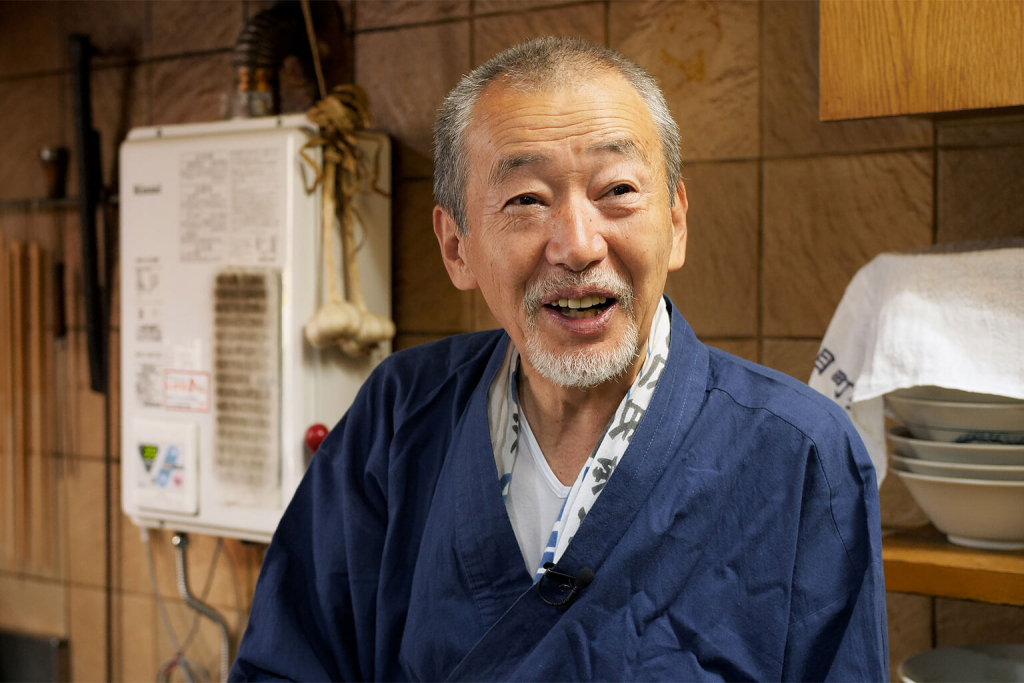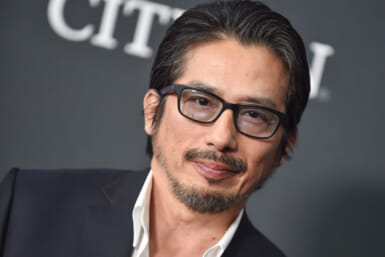Masamoto Ueda serves a classic Tokyo-style shoyu (soy sauce) ramen topped with chashu pork at Bizentei, a bustling shop not far from Iidabashi Station. Ueda has been serving these noodles for 40 years, 30 years at this specific location. Come Back Anytime is a documentary that follows Ueda and a community of regulars he’s nurtured over the decades.
Director, cinematographer and editor John Daschbach, with an MFA in film from Columbia University, already has a few movies under his belt. Come Back Anytime, however, is his first documentary. The American filmmaker has been a resident of Tokyo for 10 years and has been visiting Bizentei regularly for about eight of them. The inspiration for the documentary came at a New Year’s Eve party at the much-loved ramen shop which ended up being a joyous gathering of customers that included choral singers and a spontaneous performance by a regular who is a professional violist.
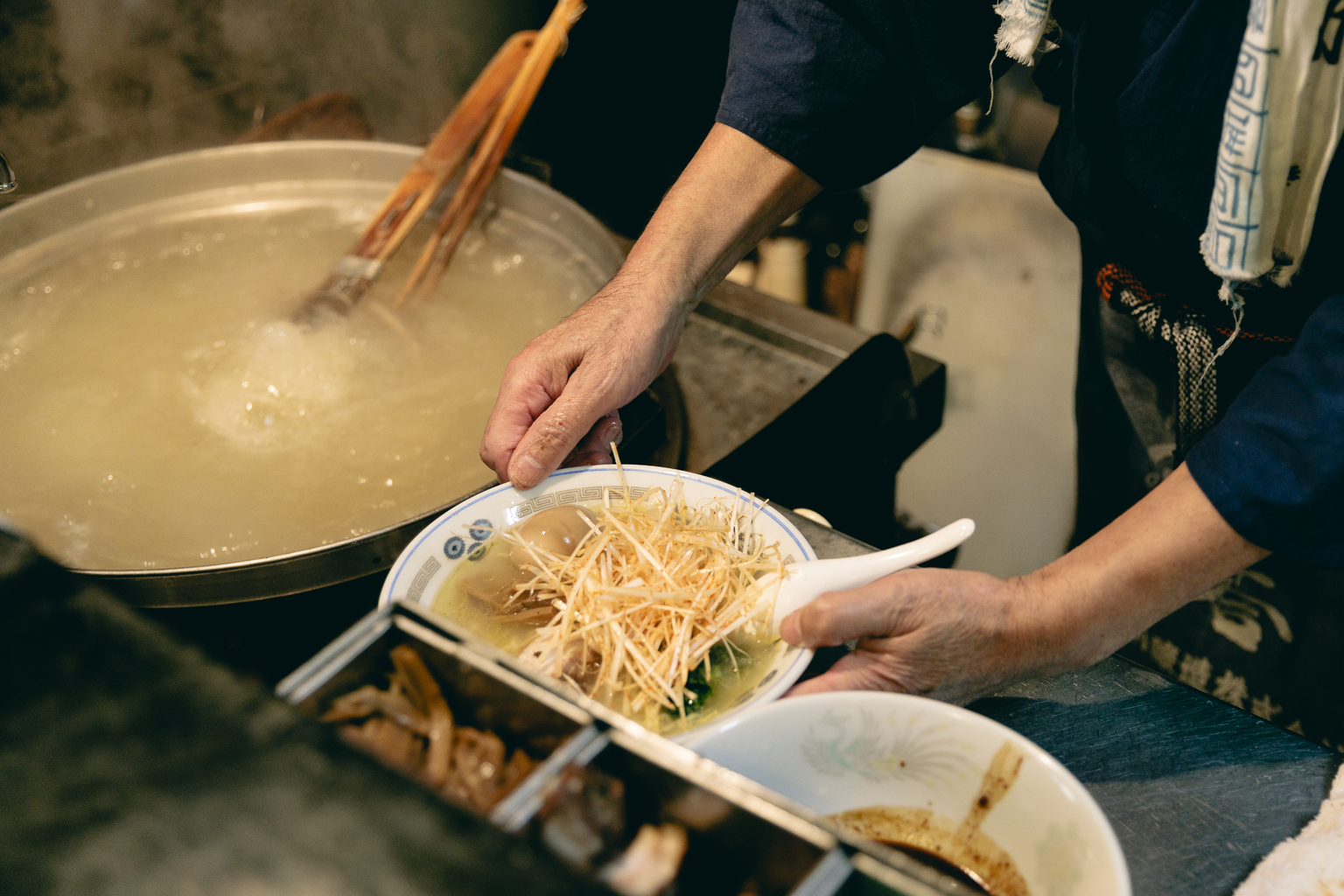
Photo by Anna Petek
Daschbach’s resolution that year was to make a documentary capturing what he considered to be so special about Bizentei, particularly the community of people who found comfort there. Ueda and his wife, Kazuko, were quick to jump on board with filming at the restaurant, excursions to his garden in Chiba Prefecture and other culinary journeys. Daschbach hoped viewers would “experience Bizentei vicariously through the movie.” The series of interviews with regulars illustrate and perfectly illuminate the compassionate warmth of the Ueda family.
Juzo Itami’s timeless classic Tampopo is a movie about customers helping the owner of a ramen shop. In Come Back Anytime, however, the roles are reversed and we observe Ueda supporting his customers in a variety of different ways. He is there when they are going through tough times. He also brings people together and creates a warm and welcoming environment that encourages diners to come back again and again.
The movie opens with the figure of Ueda in his narrow kitchen preparing the mise en place for ramen: seasoning menma bamboo shoots, slicing chashu pork, making the soup stock based on pork bones and chicken fat, sharpening knives and preparing the fillings for gyoza that Kazuko will later stuff. The film speed slows down as Ueda fills bowls with soup and curly noodles. It’s no wonder the shop is so popular with students from nearby universities and workers from the local neighborhood.
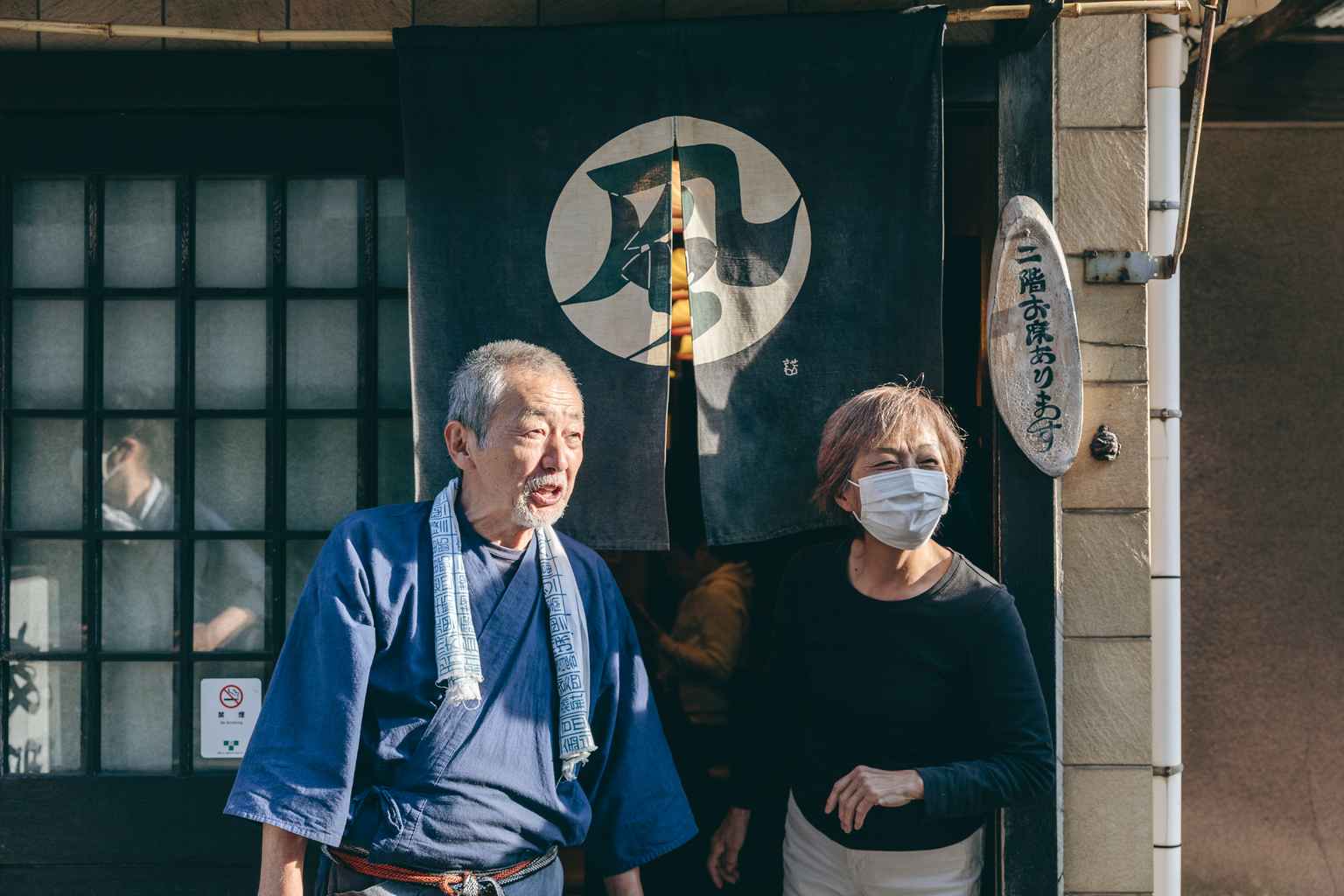
Photo by Anna Petek
Filming was conducted over a full year. Through the seasons we are taken along on weekend excursions by Ueda and the community of regulars to pick nashi pears and harvest jinenjo wild mountain potatoes as well as bamboo shoots. We also get to see Ueda’s garden in Chiba for the annual New Year mochi pounding festivities.
Shooting began in 2018 and continued through 2019, followed by the meticulous work of transcribing and editing. The pandemic hit in 2020 and Daschbach, while stuck at home, kept himself busy polishing the film and adjusting the color and sound.
“Coronavirus made working on the documentary more precious, realizing the ephemeral nature of communities like this and how vulnerable they are to sudden and potentially catastrophic disruptions,” said Daschbach in a recent interview with TW.
Working alongside Daschbach was producer Wataru Yamamoto. He conducted and transcribed all the interviews and together they created the subtitles. The strict guidelines about how many words could be seen on screen and for how many seconds, according to Daschbach, proved extremely challenging.

Photo by Anna Petek
Come Back Anytime was released in 2021 and has been well received so far, already picking up the Best Documentary award at Devour! The Food Film Fest in Nova Scotia. The most moving sections of the film are interviews with Bizentei’s loyal tribe, some of whom have been frequenting Ueda’s shop for 20, 30 and, in some cases, even 40 years.
Takashi Tanaka, a professional musician and founding member of indie darlings Sunny Day Service, travels throughout Japan and estimates that he eats between 500 and 600 bowls of ramen a year. In the film, he gives a mini lecture on the history of ramen. After coming from China, the “soy sauce-based soup is what originally defined Japanese ramen,” he says. Tanaka describes Ueda’s signature bowl as one that “evokes the nostalgia of a simple, classic Tokyo style for many” and an “old-fashioned, soy sauce base in a clear, meaty soup with thin curly noodles.” He adds that the ramen is “more subtly complex than some may realize” and that “Ueda has a personality that attracts regulars.”
One of these regulars, Toshiro Komatsubara, said to Ueda, years back, that he wanted to drink a cold beer after work with his ramen. Ueda eventually, after a period of reflection, gave into his request. Following the addition of beer, sake and shochu were also later added to the drinks menu. In the evening, diners eat gyoza and small bites, basically ramen toppings like seasoned egg or menma fermented bamboo shoots and finish with a bowl of ramen.
Kazuko Ueda is there for lunch service but returns home in the afternoon. In the evening, Ueda sometimes relies on the regulars to help serve ramen to diners on the second floor. It’s an instance where staff and regulars come together and work as an impromptu family.
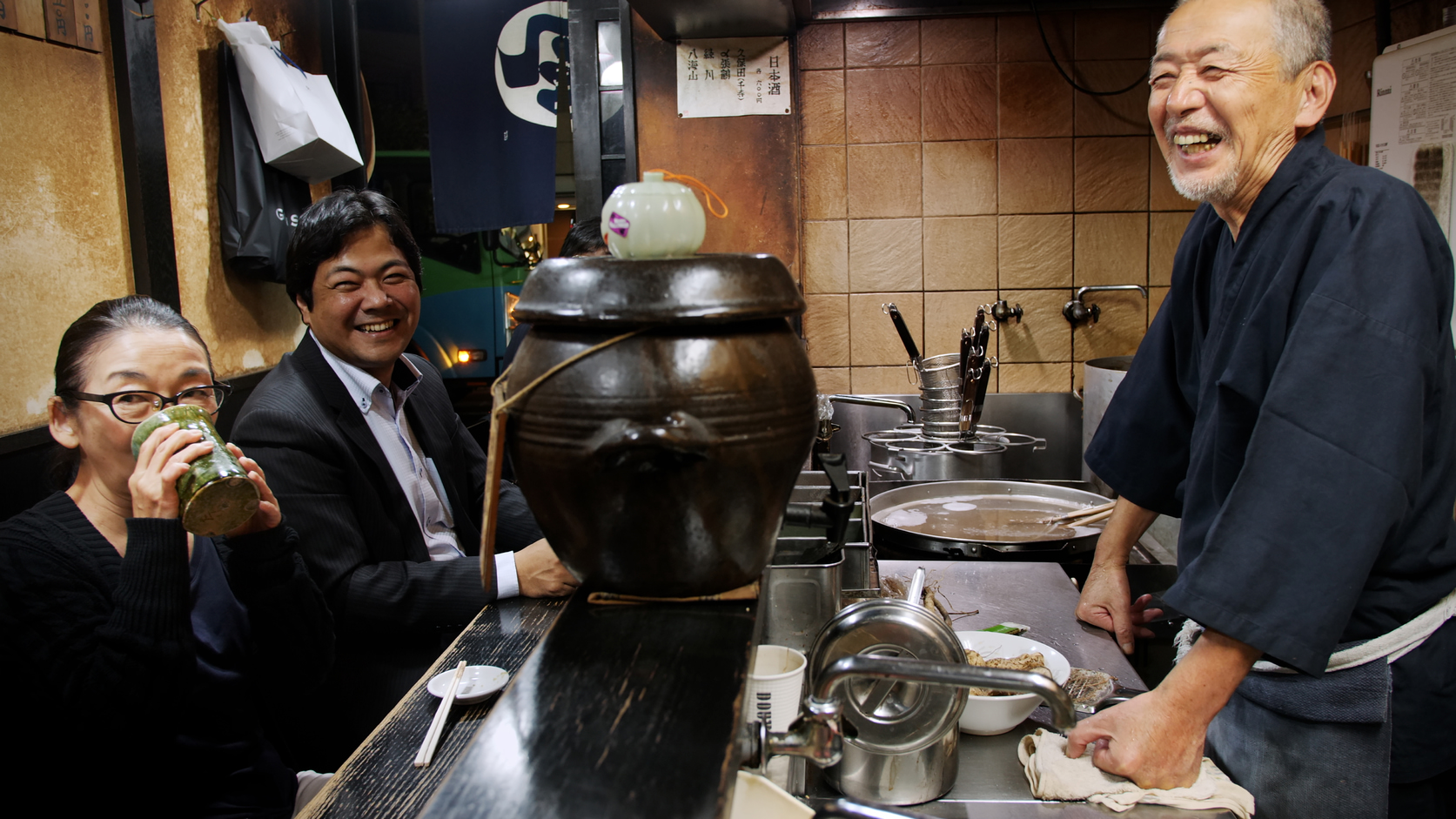
Photo courtesy of JD Media
Following the interview with Daschbach we popped along to Bizentei to see what all the fuss was about. Ueda warmly welcomes everyone. A young man came in and Ueda called out “hisashiburi” (I haven’t seen you in a while). Masashi Fujinami, who appears in the documentary, came in while we were having lunch. We discussed the movie with the regular commenting that Ueda, “is the kindest and he has such a warm heart.”
Producer Yamamoto adds that people could even come here for counseling on life matters. In the documentary, Fumie Kamiya, another regular, opens up with comments like “this is where I would come when I’m feeling down,” as well as “he let me cry here” and “he understands people’s sorrows.”
Some refer to Ueda as master while others call him taisho (boss), but to all he’s a friend. He’s laid back and quick to laugh and it’s easy to understand why many people feel so at home here. He has even played matchmaker for at least two couples. Ueda and Kazuko have three children but have never pushed any of them to take over the family business. He’s comfortable in the knowledge that Bizentei will, sadly, be a one-generation restaurant.
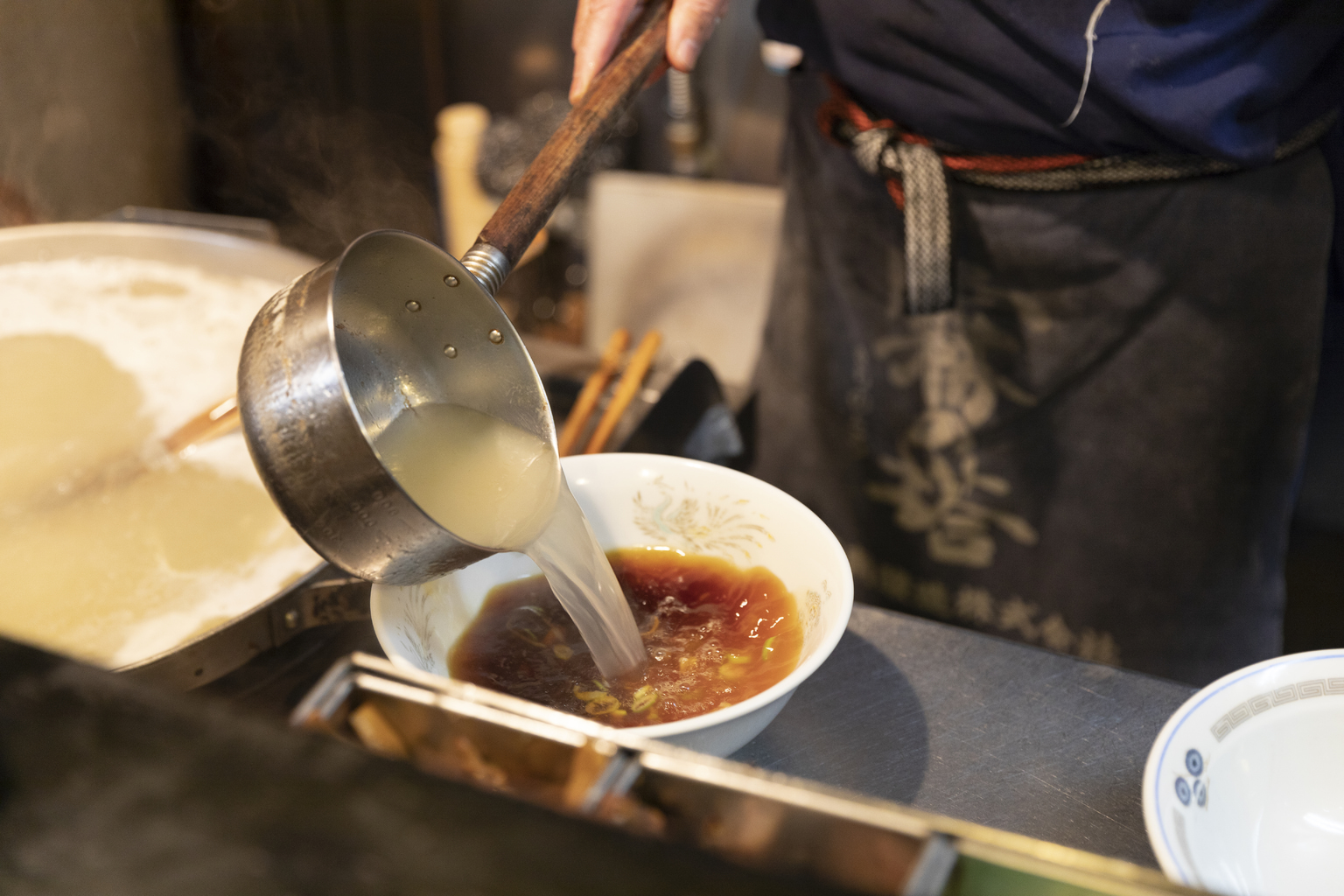
Photo by Anna Petek
While people around the world, at the time of writing, are not actually allowed to enter Japan, those of us in Tokyo are still able to stop by for a comforting bowl of noodles. On the menu are a soy sauce ramen with chashu that almost melts in the hot soup, a salt ramen topped with a nest made from leek and a spicy miso ramen with wakame (seaweed) and bean sprouts. All are highly recommended.
Kamiya states that she found comfort and solace here and during my visit I similarly found a delicious bowl of ramen and a warm welcome and was happy to see that Ueda in person is like he is in the movie, easy-going and kind. We should all be so lucky to have a Bizentei in our own neighborhoods.
Giving his thoughts on the movie, Ueda says he’s happy how it turned out and by the hard work and dedication shown by Daschbach and Yamamoto. Kazuko Ueda pointed out a table on the second floor where Yamamoto worked long hours transcribing the interviews from Japanese to English, which Daschbach used as references while editing.
Ueda was curious to see how the movie would be perceived outside of the country by non-Japanese. He wondered, out loud, if there were any such restaurants that diners could go to for camaraderie and support. As I left, Ueda called out, “Come back anytime.” I’m already looking forward to returning.
More Info
Bizentei
1-7-10 Fujimi, Chiyoda-ku
Viewers in Japan will be able to watch Come Back Anytime later in 2022.
Top and feature image courtesy of JD Media.
Updated On May 1, 2022

